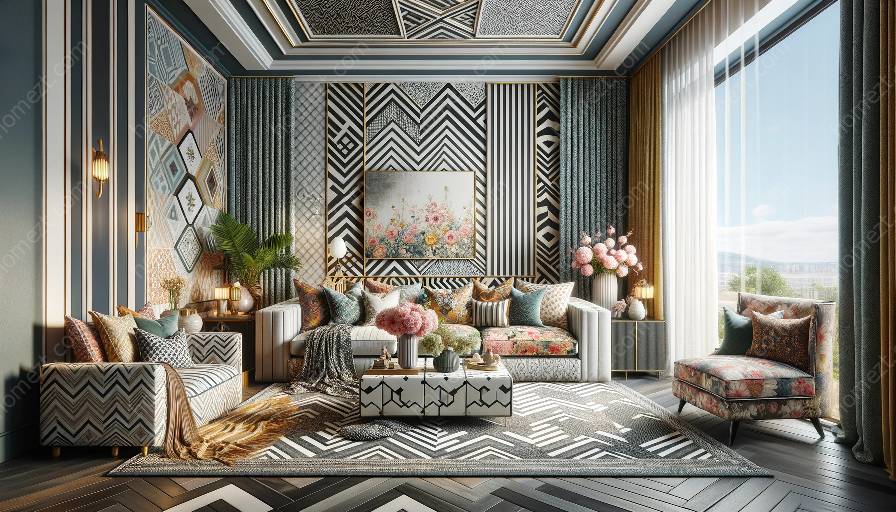Pattern mixing in interior decor is a timeless practice that has been influenced by various historical movements, from ancient civilizations to modern art and design. Understanding the historical context of pattern mixing can provide valuable insights into contemporary decorating trends and help create visually captivating and harmonious spaces.
Ancient Influences
The practice of pattern mixing can be traced back to ancient civilizations such as the Egyptians, Greeks, and Romans. These cultures often incorporated intricate patterns and motifs into their architecture, textiles, and decorative arts, laying the foundation for the use of patterns in interior decor.
Islamic Art and Design
The intricate geometric patterns and mesmerizing motifs of Islamic art and design have significantly influenced modern pattern mixing. The use of arabesque patterns, tessellations, and intricate tile work in Islamic architecture has inspired contemporary interior designers to experiment with geometric patterns and create visually dynamic spaces.
Renaissance and Baroque Eras
The Renaissance and Baroque eras in Europe saw a resurgence of interest in patterns and ornamentation. Elaborate tapestries, ornate wall coverings, and richly patterned textiles became synonymous with the opulence and grandeur of the period. The combination of floral, damask, and scroll motifs during this time laid the groundwork for the juxtaposition of diverse patterns in interior decor.
Global Trade and Colonial Influences
The era of global trade and colonial expansion brought a fusion of diverse patterns and decorative styles. The exchange of textiles, ceramics, and decorative objects between different cultures led to the assimilation of pattern mixing in interior decor. The incorporation of Asian, African, and Indigenous patterns into European and American interiors added depth and diversity to the practice of pattern mixing.
Arts and Crafts Movement
The Arts and Crafts movement of the late 19th and early 20th centuries emphasized the beauty of handmade, artisanal objects and designs. This movement placed a renewed emphasis on the use of natural motifs, simple geometric patterns, and folk-inspired designs, laying the foundation for a more eclectic approach to pattern mixing in interior decor.
Modern Art and Design
The bold and experimental nature of modern art and design movements, such as Cubism, Surrealism, and Abstract Expressionism, brought a new dimension to pattern mixing. Artists and designers began to explore the juxtaposition of contrasting patterns, colors, and textures, giving rise to a more avant-garde and dynamic approach to interior decor.
Mid-Century Modernism
The mid-century modern movement embraced clean lines, organic forms, and bold patterns, contributing to a resurgence of interest in pattern mixing. Influential designers and architects of this era, such as Charles and Ray Eames and Eero Saarinen, integrated playful and bold patterns into their furniture and interior designs, setting the stage for the eclectic and vibrant use of patterns in modern decor.
Contemporary Influences
Contemporary interior decor draws inspiration from a rich tapestry of historical influences, leading to a diverse and dynamic approach to pattern mixing. The global exchange of design ideas, the revival of traditional crafts, and the embrace of individual expression have all contributed to the current fascination with pattern mixing in interior decor.
Conclusion
Pattern mixing in interior decor has been shaped by a rich tapestry of historical influences, from ancient civilizations to modern art movements. By understanding the historical context of pattern mixing, designers and homeowners can leverage this knowledge to create visually striking and harmonious living spaces that pay homage to the diverse and vibrant history of pattern usage in interior decor.






































